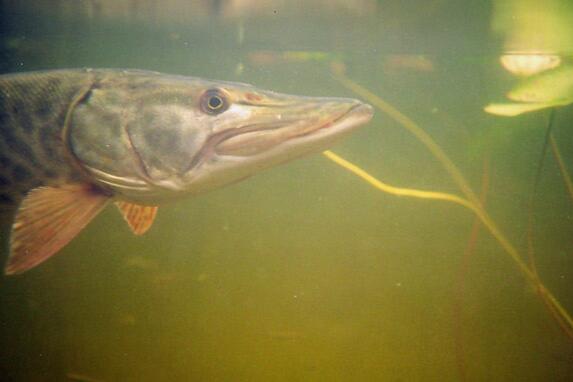But it doesn't need 10,000 casts because that would mean having one strike is random. Instead, it helps to learn how they behave. A recent experiment evaluated behavioral traits – activity, aggression, boldness, and exploration – for 68 young muskies in laboratory tanks before transferring the fish to an outdoor pond. Then they fished the pond every day for 35 days.
They found what anglers learn by trying every combination of time of day, lure, and casting style. They only caught seven fish. Worse, catch rates declined rapidly after the first few days. The fish they did catch shared things in common. Captured fish were larger, less exploratory, and less aggressive than their peers in the laboratory behavior tests.

Credit: Petroglyph on Flickr, Creative Commons
Muskies like to wait and strike when conditions are perfect so they can be tough to catch because they may be moving around trying to get comfortable. And if fish tales are true they learn human behavior and avoid it. The new study found that not only will you have to get a lure right where they are, you have to get the right behavior type; a little bit lazy.
Fortunately just in people, laziness can be inherited, so catch and release if you get one is important. Being large, less exploratory, and less aggressive make muskies more likely to go after lures, so the authors urge the sporting community to maintain actions to avoid harming those fish or impacting their reproductive capacity. Most do just that but being caught is stressful anyway. Stress can lead to incidental mortality and then individuals vulnerable to capture are removed from the population so those with other behaviors may become dominant among muskies left behind. Then they become the fish of 20,000 casts.
That is why the authors applaud anglers who get their fish quickly, release in a way that minimizes impact on the fish, and keep an eye on water temperature.





Comments